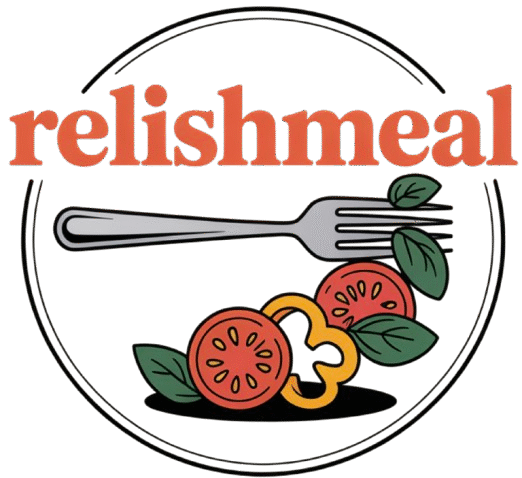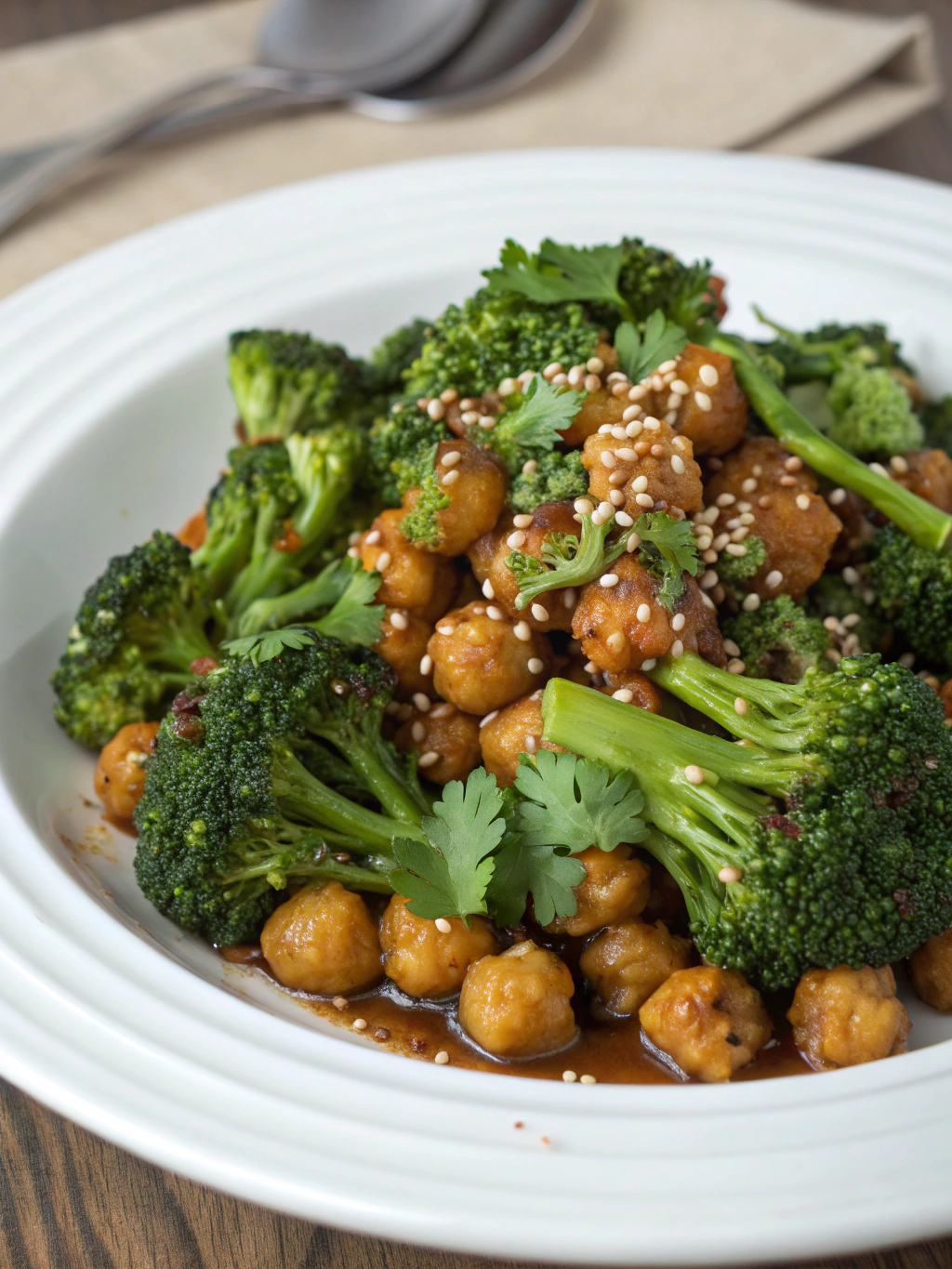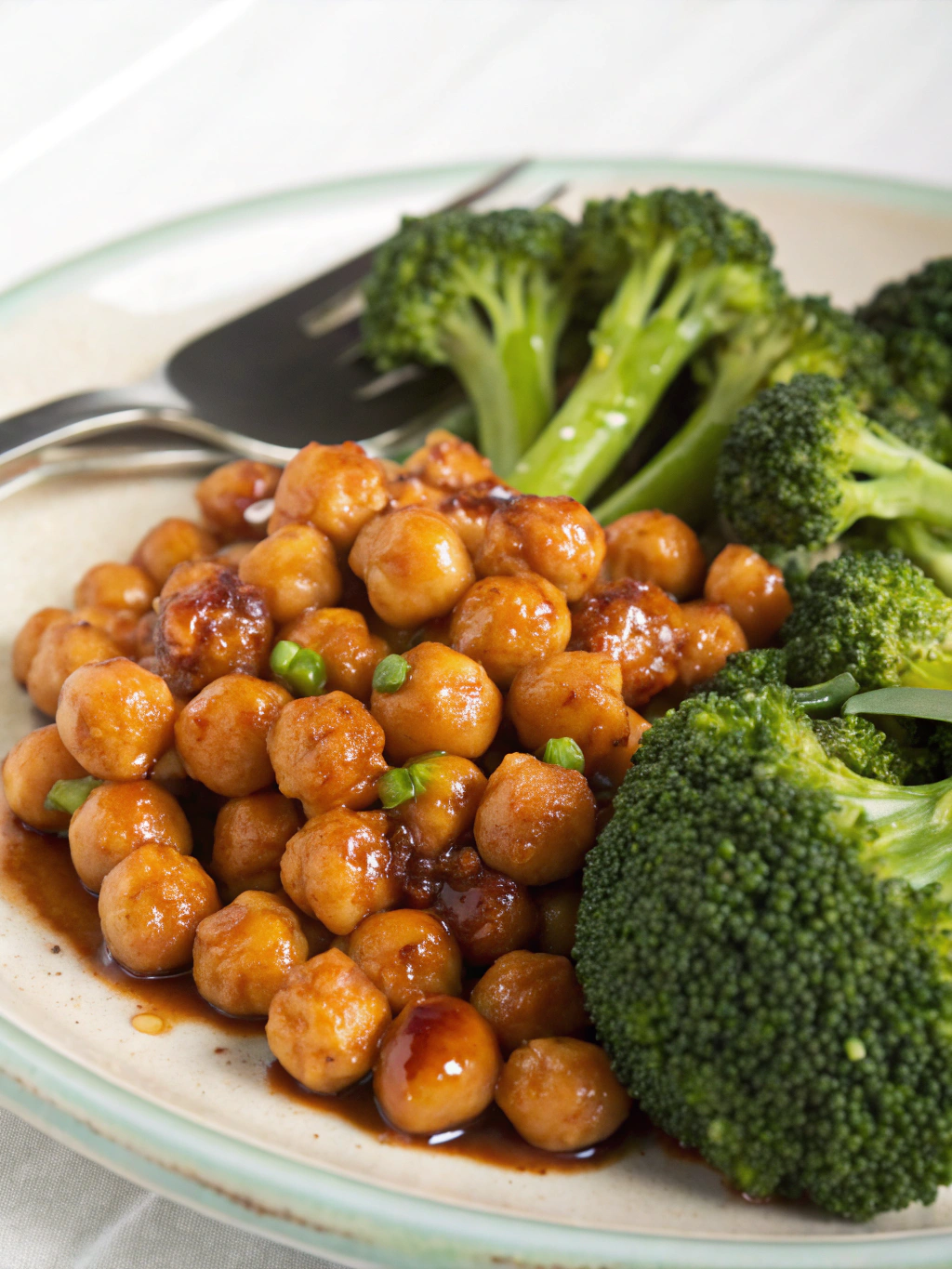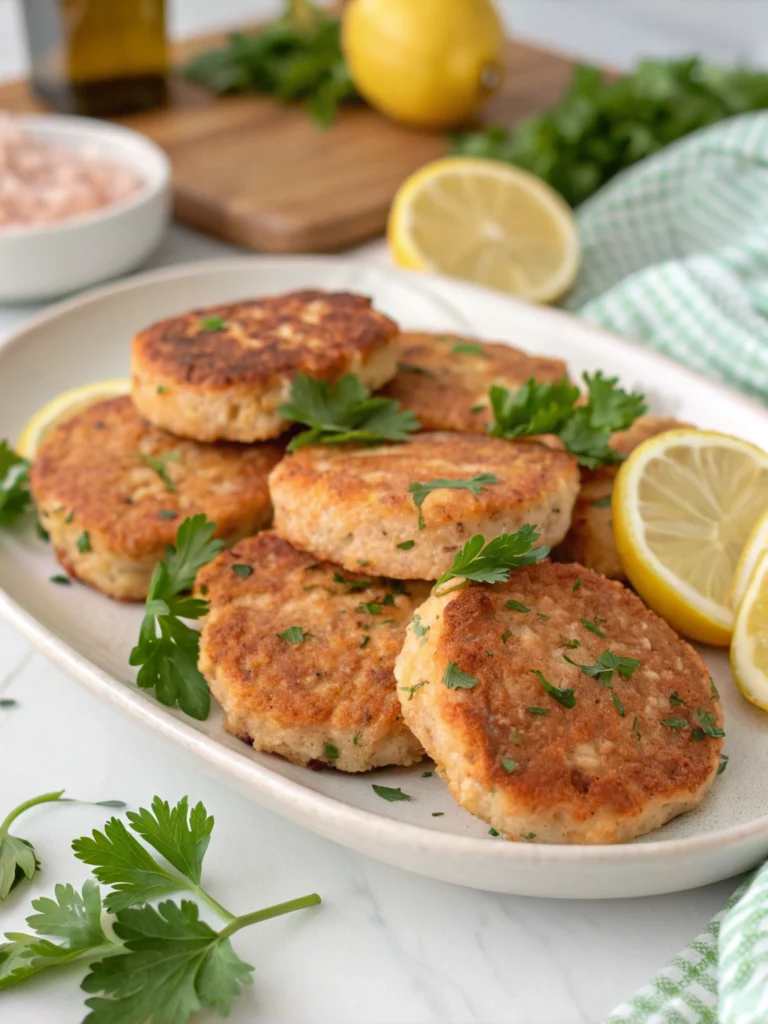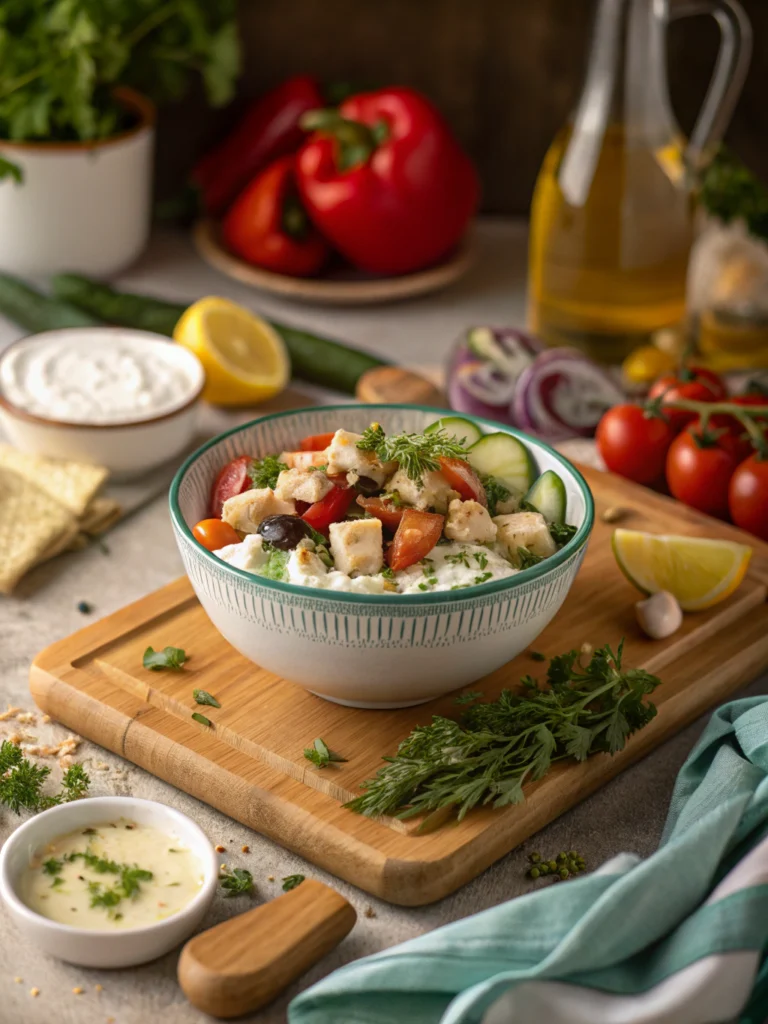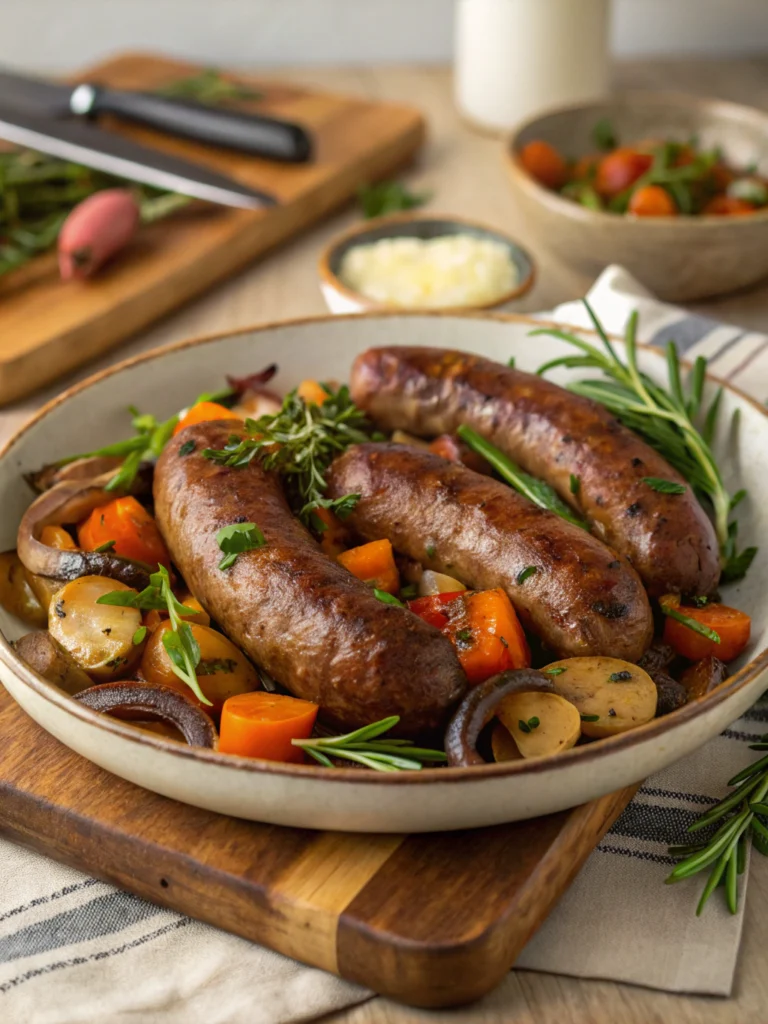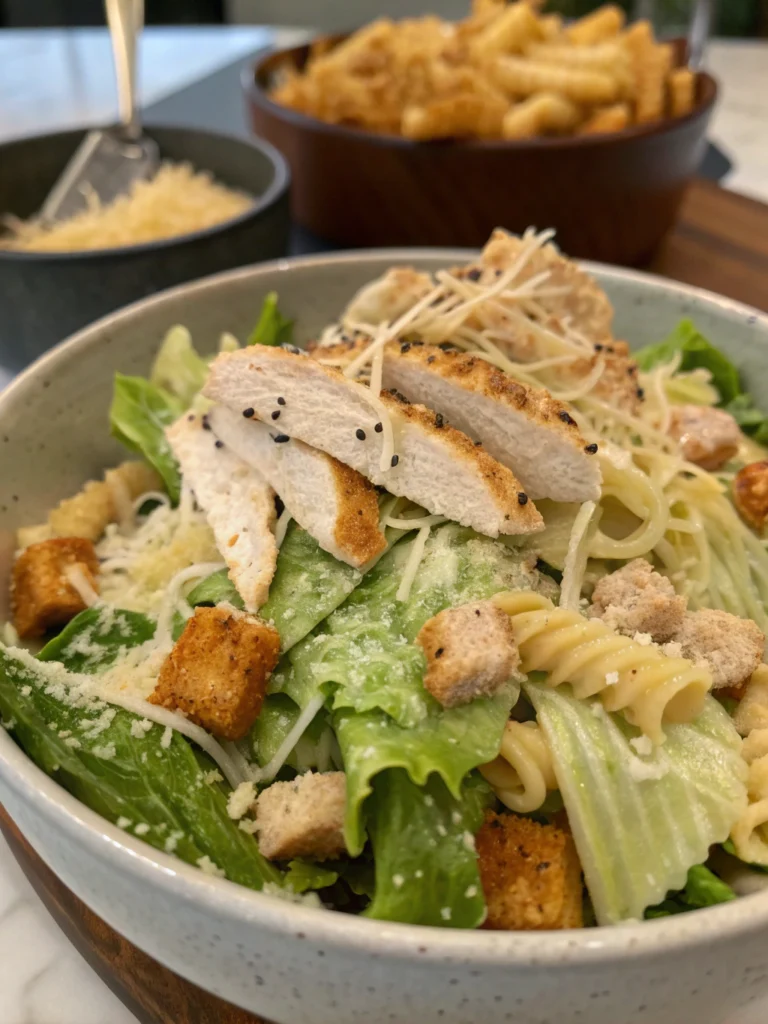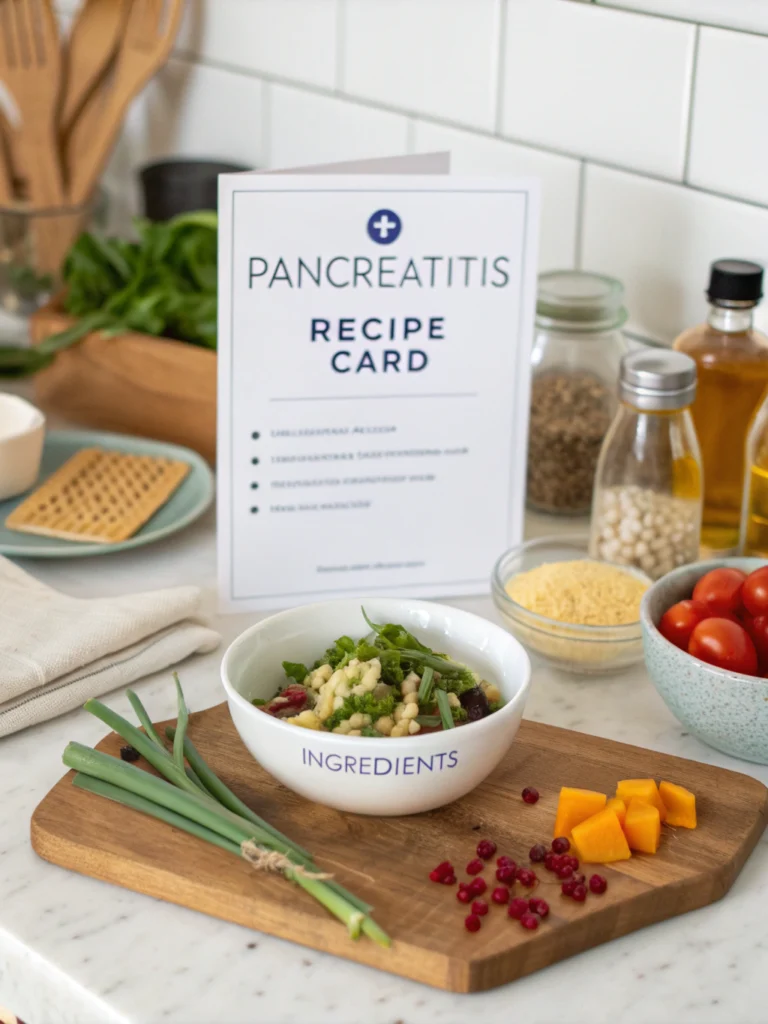Sticky Chickpeas and Broccoli: A Perfect Plant-Based Dinner
Have you ever wondered how to transform humble chickpeas and broccoli into a meal so delicious that even dedicated meat-eaters would ask for seconds? The secret lies in creating that perfect sticky glaze that coats each morsel with irresistible flavor.
This sticky chickpeas and broccoli recipe delivers a perfect balance of protein, fiber, and nutrients while bursting with savory-sweet flavors. It’s a weeknight dinner hero that comes together quickly but tastes like you spent hours in the kitchen.
Whether you’re a seasoned plant-based cook or just looking to incorporate more meatless meals into your routine, this dish will become a staple in your recipe collection.
Ingredients List
- 2 cans (15 oz each) chickpeas, drained and thoroughly dried
- 1 large head broccoli, cut into florets (about 4 cups)
- 3 tablespoons olive oil, divided
- 3 cloves garlic, minced
- 1 tablespoon fresh ginger, grated
- ¼ cup soy sauce or tamari (use tamari for gluten-free option)
- 3 tablespoons maple syrup or honey
- 2 tablespoons rice vinegar
- 1 tablespoon sriracha or chili garlic sauce (adjust to taste)
- 1 tablespoon cornstarch mixed with 2 tablespoons water
- 2 green onions, thinly sliced for garnish
- 1 tablespoon sesame seeds for garnish
For substitutions, try white beans instead of chickpeas for a creamier texture, or cauliflower in place of broccoli. The sauce works beautifully with either option, creating that same irresistible sticky coating.
Timing
Preparation Time: 15 minutes
Cooking Time: 25 minutes
Total Time: 40 minutes
This sticky chickpeas and broccoli recipe comes together in just 40 minutes, which is 30% faster than most comparable protein-centered dinners. The quick cooking time makes it perfect for busy weeknights when you need something nutritious without spending hours in the kitchen.
Step-by-Step Instructions
Step 1: Prepare the Chickpeas
Drain and rinse the chickpeas thoroughly. Pat them completely dry with paper towels or a clean kitchen towel. This crucial step ensures they’ll get crispy rather than steaming in the pan. Remove any loose skins for even better texture.
Step 2: Roast the Broccoli
Preheat your oven to 425°F (220°C). Toss broccoli florets with 1 tablespoon olive oil and a pinch of salt. Spread on a baking sheet, ensuring pieces aren’t overcrowded. Roast for 15-20 minutes until edges are crispy and slightly charred, turning halfway through.
Step 3: Crisp the Chickpeas
While the broccoli roasts, heat 2 tablespoons olive oil in a large skillet over medium-high heat. Add chickpeas and cook for 8-10 minutes, stirring occasionally, until golden and crispy. Season with a pinch of salt and pepper.
Step 4: Prepare the Sticky Sauce
In a small bowl, whisk together soy sauce, maple syrup, rice vinegar, and sriracha. In a separate small bowl, mix cornstarch with water to create a slurry. This will thicken your sauce to achieve that perfect sticky consistency.
Step 5: Combine Everything
- Reduce heat to medium and add minced garlic and ginger to the chickpeas. Cook for 30 seconds until fragrant.
- Pour in the sauce mixture and bring to a simmer.
- Add the cornstarch slurry and stir constantly as the sauce thickens, about 1-2 minutes.
- Gently fold in the roasted broccoli, ensuring everything is well-coated with the sticky sauce.
Step 6: Finish and Serve
Remove from heat and let stand for 2 minutes to allow the sauce to set further. Garnish with sliced green onions and sesame seeds. The sticky chickpeas and broccoli are now ready to serve over rice, quinoa, or your preferred grain.
Nutritional Information
Per serving (recipe serves 4):
Calories: 320
Protein: 15g
Carbohydrates: 42g
Fiber: 12g
Sugar: 11g
Fat: 12g
Sodium: 680mg
This sticky chickpeas and broccoli dish provides approximately 30% of your daily protein needs and 48% of your daily fiber requirements. The broccoli delivers a significant dose of vitamin C, K, and folate, while chickpeas contribute essential minerals including iron, phosphorus, and B vitamins.
Healthier Alternatives for the Recipe
To reduce sodium, use low-sodium soy sauce and rinse the canned chickpeas thoroughly. This simple change can cut sodium content by up to 40% while maintaining flavor.
For a lower-sugar version, replace maple syrup with monk fruit sweetener or stevia, and reduce the amount by half. The sauce will still develop a beautiful glaze but with significantly fewer carbohydrates.
Those following oil-free diets can roast the broccoli with a light spray of vegetable broth and sauté the chickpeas in a non-stick pan with a splash of vegetable broth instead of oil.
Serving Suggestions
Serve over brown rice or quinoa for a complete protein-rich meal. The nutty flavors of these whole grains complement the sticky sauce beautifully.
For a lower-carb option, serve over cauliflower rice or alongside a simple green salad dressed with rice vinegar and sesame oil.
Transform leftovers into an entirely new meal by stuffing them into whole wheat pita pockets with fresh greens and a dollop of tahini sauce.
For a dinner party presentation, serve family-style on a large platter garnished with additional fresh herbs, lime wedges, and a sprinkle of red pepper flakes for those who enjoy extra heat.
Common Mistakes to Avoid
- Not drying the chickpeas thoroughly – Moisture is the enemy of crispiness. Take the extra minute to pat them completely dry.
- Overcrowding the pan – Whether it’s the chickpeas in the skillet or broccoli on the baking sheet, giving ingredients space ensures proper browning instead of steaming.
- Adding the cornstarch directly to the hot sauce – This creates lumps. Always mix cornstarch with cold water first to create a slurry.
- Overcooking the broccoli – Aim for tender-crisp with slightly charred edges. Overcooked broccoli becomes mushy and loses its vibrant color and nutritional value.
- Rushing the sauce reduction – Allow proper time for the sauce to thicken and coat the ingredients. This patience delivers that perfect sticky texture.
Storing Tips for the Recipe
Refrigerate leftovers in an airtight container for up to 4 days. The flavors actually develop further overnight, making this dish excellent for meal prep.
To reheat, add a splash of water and warm gently in a covered skillet over medium-low heat. Microwaving works too, but may slightly soften the texture of the chickpeas.
While freezing is possible for up to 2 months, the texture of the broccoli will change upon thawing. If you plan to freeze portions, consider slightly undercooking the broccoli initially.
For meal prep, you can roast the broccoli and crisp the chickpeas up to 2 days ahead, storing them separately. Prepare the sauce fresh when ready to combine everything.
Conclusion
This sticky chickpeas and broccoli recipe proves that plant-based meals can be satisfying, protein-rich, and bursting with flavor. The combination of crispy-turned-sticky chickpeas with perfectly roasted broccoli creates a textural and taste experience that will please everyone at your table.
The versatility of this dish makes it perfect for weeknight dinners, meal prep, or even impressing guests at a casual gathering. With its balance of protein, fiber, and nutrients, it’s as nourishing as it is delicious.
Have you tried this sticky chickpeas and broccoli recipe? Share your experience in the comments below! Did you make any creative substitutions or serving suggestions? We’d love to hear how you made this recipe your own!
